Military aircraft insignia
From Wikipedia, the free encyclopedia
| Military aircraft insignia | |
|---|---|
 |
|
| Royal Saudi Air Force roundel on an EE Lightning fighter |

Eurofighter Typhoon
prototype on display at Dubai Air Show 1998, showing the multiple
insignia of the Eurofighter consortium customers: (left to right)
Spanish Ejército del Aire, Italian Aeronautica Militare, British Royal Air Force, and German Luftwaffe.
Insignia are often displayed on the sides of the fuselage, the upper and lower surfaces of the wings, as well as on the fin or rudder of an aircraft, although considerable variation can be found amongst different air arms, and within specific air arms over time.
Contents
History
France

French Nieuport 10 during the First World War
United Kingdom in the First World War
The British Royal Flying Corps (RFC) abandoned their original painted Union Flags because, from a distance, they looked too much like the Eisernes Kreuz (Iron Cross) used on German aircraft. The Royal Naval Air Service used a red-rimmed white circle on their wings for a short period — almost exactly resembling those in simultaneous use by the neutral predecessors of today's Royal Danish Air Force — before both British air arms adopted a roundel resembling the French one, but with the colours reversed, (red-white-blue from centre to rim), before the two separate air arms joined to form the Royal Air Force on April 1, 1918. This basic design with variations in proportions and shades has existed in one form or another to this very day.[1][2]United States

A restored SPAD XIII fighter in American markings, with "reversed" fin flash colors.
As of 19 May 1917 all branches of the military were to use a white star with a central red circle all in a blue circular field, painted in the official flag colors.[1] In August 1919 the colors were adjusted to the current standards and the proportions were adjusted slightly so that the centre red circle was reduced slightly from being 1/3 of the diameter of the blue circular field, to being bound by the edges of an imaginary pentagram connecting the inner points of the star. During the First World War and into the early post war period, US Marine Corps aircraft often had the Imperial Russian-style WW I tricolor roundel with an anchor painted on the sides of the fuselage.
In the months after Pearl Harbor it was realized that the central red circle could be construed as being a Japanese Hinomaru from a distance or in poor visibility, and in May 1942 the central red circle was eliminated. On aircraft in service they were painted over with white. During November 1942, US forces participated in the Torch landings and for this a chrome yellow ring (of almost random thickness) was temporarily added to the outside of the roundel to reduce incidents of Americans shooting down unfamiliar British aircraft, which could themselves be distinguished by a similar chrome yellow outline on their fuselage roundels.
None of these solutions was entirely satisfactory as friendly fire incidents continued and so the US Government initiated a study and discovered that the red wasn't the issue since color couldn't be determined from a distance anyway—but the shape could be. After trying out several variations including an oblong roundel with two stars, they arrived at using white bars flanking the sides of the existing roundel, all with a red outline, which became official in June 1943. This still wasn't entirely satisfactory and the red was replaced with blue in September 1943. On US Navy aircraft painted overall in gloss midnight blue starting in 1944-45, the blue of the roundels was virtually identical to the background blue color, so the blue portion was eventually dispensed with and only the white portion of the roundel was painted on the aircraft.
In January 1947 red bars were added within the existing white bars on both USN and USAAF aircraft and in September of the same year, the United States Army Air Forces (USAAF) became an independent service and was renamed the United States Air Force (USAF), during the timeframe of the passage of the National Security Act of 1947 by the U.S. Congress that established the independent USAF service. In 1955 the USN would repaint all its aircraft from midnight blue to light grey over white and would use exactly the same roundel as the USAF again. Since then there have been some minor variations, mostly having to do with lo-visibility versions of the star and bars roundel. Air superiority F-15's eliminated the blue outline in the 1970s, and later some aircraft replaced the blue with black or a countershaded grey, or used a stencil to create an outlined version.
United Kingdom and Commonwealth nations
Main article: Royal Air Force roundels
From 1923 onwards, a variant of the British red-white-blue roundel with the white ring omitted has been used on camouflaged aircraft. During the Second World War,
the red inner circle of roundels on aircraft based in the Asia-Pacific
region — much like the American roundel's central red circle of pre-1942
vintage had been omitted for similar reasons — was painted white or
light blue, so they would not be confused with the Hinomaru markings on Japanese aircraft (still used by the Japan Self-Defense Forces to this day).After the Second World War, the RAF roundel design was modified by Commonwealth air forces, with the central red disc replaced with a maple leaf (Royal Canadian Air Force), kangaroo (Royal Australian Air Force), kiwi (Royal New Zealand Air Force), and springbok (South African Air Force).
Low-visibility insignia
As early as 1942-43, and again in recent decades, "low-visibility" insignia have increasingly been used on camouflaged aircraft. These have subdued, low-contrast colours (often shades of grey or black) and frequently take the form of stenciled outlines. Infra-red (heat) seeking missiles were found to be able to home in on the markings and so they either had to be reduced in size or contrast. Previously low visibility markings were used to increase ambiguity as to whose aircraft it was, and to avoid compromising the camouflage, all while still complying with international norms governing recognition markings.The World War II German Luftwaffe often used such "low-visibility" versions of their national Balkenkreuz insignia from the mid-war period through to V-E Day, omitting the central black "core" cross and only using the "flanks" of the cross instead, in either black or white versions.
Fin flashes
Main article: Fin flash

Low-visibility Royal Air Force fin flash on the fin of an Avro Vulcan
Current insignia of national air forces
See also: List of air forces
-
Argentina
(Naval Aviation) -
Australia
(low visibility) -
Australia
(Army Aviation) -
Brazil
(Low Visibility) -
Brazil
(Naval Aviation) -
Brazil
(Army Aviation) -
Canada
(low visibility) -
Chile (low visibility) -
Republic of China (Taiwan)
(low visibility) -
Colombia
(low visibility) -
Colombia
(Naval Aviation) -
Colombia
(Naval Aviation
low visibility) -
Croatia (low visibility) -
Czech Republic
(low visibility) -
Dominican Republic
(low visibility) -
Ecuador
(Naval Aviation) -
France
(Naval Aviation) -
France
(Naval Aviation
low visibility) -
Greece Navy
(Low Visibility) -
Hungary
(Low Visibility) -
Indonesia
(Army Aviation) -
Indonesia
(Naval Aviation) -
Korea, South (ROK)
(Low Visibility) -
Malaysia
(Naval Aviation) -
Mexico
(Low Visibility) -
Netherlands
(Low Visibility) -
Netherlands
(Low Visibility, Alternate) -
New Zealand
(Low Visibility) -
Nigeria
(Naval Aviation) -
Norway
(Low Visibility) -
Peru
(Naval Aviation) -
Philippines
(Low Visibility) -
Portugal
(Low Visibility) -
Saudi Arabia
(Low Visibility) -
Serbia
(Low Visibility) -
Singapore
(Low Visibility) -
Slovakia
(Low Visibility) -
South Africa
(Low Visibility) -
Sweden
(Low Visibility) -
Ukraine
(Naval Aviation) -
United Arab Emirates
(Low Visibility) -
United Kingdom
(Low Visibility) -
United Kingdom
(Low Visibility, light) -
United States
(Low Visibility) -
United States
(Low Visibility, Alternate) -
Uruguay
(Naval Aviation) -
Venezuela
(Naval Aviation)
Government insignia
-
Poland
(Border Guard)
Former insignia of national air forces
-
Abkhazia
(1992-2008) -
Afghanistan
1924-1928 -
Kingdom of Afghanistan
(1929–1965) -
Afghanistan
1967-1978 -
Democratic Republic of Afghanistan
(1979–1983) -
Democratic Republic of Afghanistan
(1983–1992) -
Islamic State of Afghanistan
(1992-2002) -
People's Socialist Republic of Albania
(pre-1958) -
Algeria
(1962–1964) -
Angola
(1975–1980) -
Argentina
(Naval Aviation) -
Australia
(1942–1946) -
Austro-Hungarian Empire
(1914–1916) -
Austro-Hungarian Empire
(1918) -
Biafra
(1967–1970) -
Bophuthatswana
(1987–1994) -
Brazilian Air Force
(1943-1945) -
Kingdom of Bulgaria
1915-1918 -
Kingdom of Bulgaria
1938-1941 -
Kingdom of Bulgaria
(1941–1944) -
Kingdom of Bulgaria
(1944–1946) -
Canada
(1946–1965) -
Chile
1918-1930 -
Republic of China
(1916–1920) -
Republic of China (Taiwan)
(1921–1991) -
Colombia
(1928–1953) -
Costa Rica
(1964–1994) -
Ustaše Croatia
(1941) -
Ustaše Croatia
(1941–1945) -
Croatia
(1991–1994) -
Cuba
(1955–1959) -
Cuba
(1959–1962) -
Czechoslovakia
(1918–1920) -
Kingdom of Egypt
(1939–1945) -
Kingdom of Egypt
(1945–1958) -
Finland
(1918–1944) -
France
(1912–1945) -
Nazi Germany
(1935-1945) -
Haiti
(1964–1986) -
Haiti
(1986–1994) -
Hungarian Soviet Republic
(1919) -
Kingdom of Hungary
(1938–1941) -
Kingdom of Hungary
(1942–1945) -
People's Republic of Hungary
(1951–1990) -
Hungary
(1990–1991) -
India
(1947–1950) -
Indonesia
(1946-1949) -
Iraq
(1931-2003) -
Ireland
(1939–1954) -
Israel
(Early version) -
Latvia
(1918–1940) -
Latvia (National Guard)
(1993-2000) -
Malaysia
(1963–1982) -
Malta
(1980–1988) -
Manchukuo
(Air Force) -
Manchukuo
(Air Transport) -
Netherlands
(1914–1921) -
Netherlands
(1939–1940) -
New Zealand
(1943–1946) -
Nicaragua
(1962–1979)
(Wing) -
Nicaragua
(1962–1979)
(Fuselage) -
Norway
(1914–1940) -
Poland
(1921–1993) -
(Southern) Rhodesia
(1939–1954) -
Rhodesia
(Federation of Rhodesia & Nyasaland)
(1954–1963) -
(Southern) Rhodesia
(1963–1970) -
Rhodesia
(1970-1980) -
Kingdom of Romania
(1941–1944) -
Socialist Republic of Romania
(1947–1985) -
Russia,
1992-2012 -
Singapore
(1968–1973) -
Singapore
(1973–1990) -
Slovak Republic
(1940-1945) -
Slovenia
(1991–1996) -
Union of South Africa
(1927–1947) -
Union of South Africa
(1947–1957) -
South Africa
(1957–1994) -
South Africa
(1994-2003) -
South Korea
(1949-2005) -
Second Spanish Republic
(1936–1939) -
Spanish State
(Wing) -
Spanish State
(Fuselage) -
Nationalist band Spanish Civil War
1936-1939 -
Sri Lanka
(1951-2010) -
Republika Srpska
(Variant 1) -
Republika Srpska
(Variant 2) -
Sudan
(1956–1970) -
Sweden
(1927–1937) -
Switzerland
(1914–1947) -
Syria
(1948–1958) -
Turkey
(1918–1972) -
USSR
(1922–1943) -
USSR
(1943-1992) -
United Kingdom
(1937–1942) -
United Kingdom
(1942–1947) -
United Kingdom, front of Asia and the Pacific
1942-1945 -
United States
(1918-1919) -
United States
(1917-1918)
(1919–1942) -
United States
(1942–1943) -
United States
(1943) -
United States
(1943–1947) -
United States Marine Corps
(1912) -
Kingdom of Yugoslavia
(1929–1941) -
SFR Yugoslavia
(1945–1991) -
SFR Yugoslavia (Serbia and Montenegro)
(1992–2006)
See also
Notes
References
- ^ Jump up to: a b c d Kershaw, Andrew: The First War Planes, Friend Or Foe, National Aircraft Markings, pages 41–44. BCP Publishing, 1971.
- Jump up ^ "The Royal Air Force Roundel". Royal Air Force History. Royal Air Force. Retrieved 2009-04-27.
- Jump up ^ Nelson, Phil (2009-02-07). "Dictionary of Vexillology". www.fotw.net. Retrieved 2009-04-27.
- Robertson, Bruce (1967). Aircraft Markings of the World 1912–1967. Letchworth, England: Harleyford Publications.












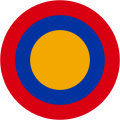



















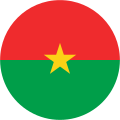








































































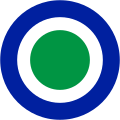


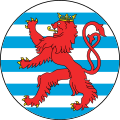



















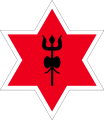


















































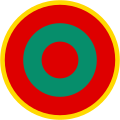





















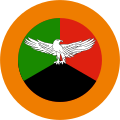



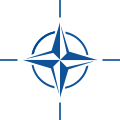













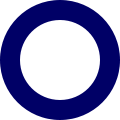


















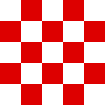




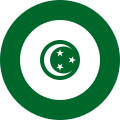














































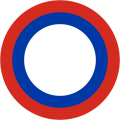



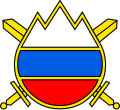








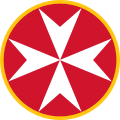





























No comments:
Post a Comment